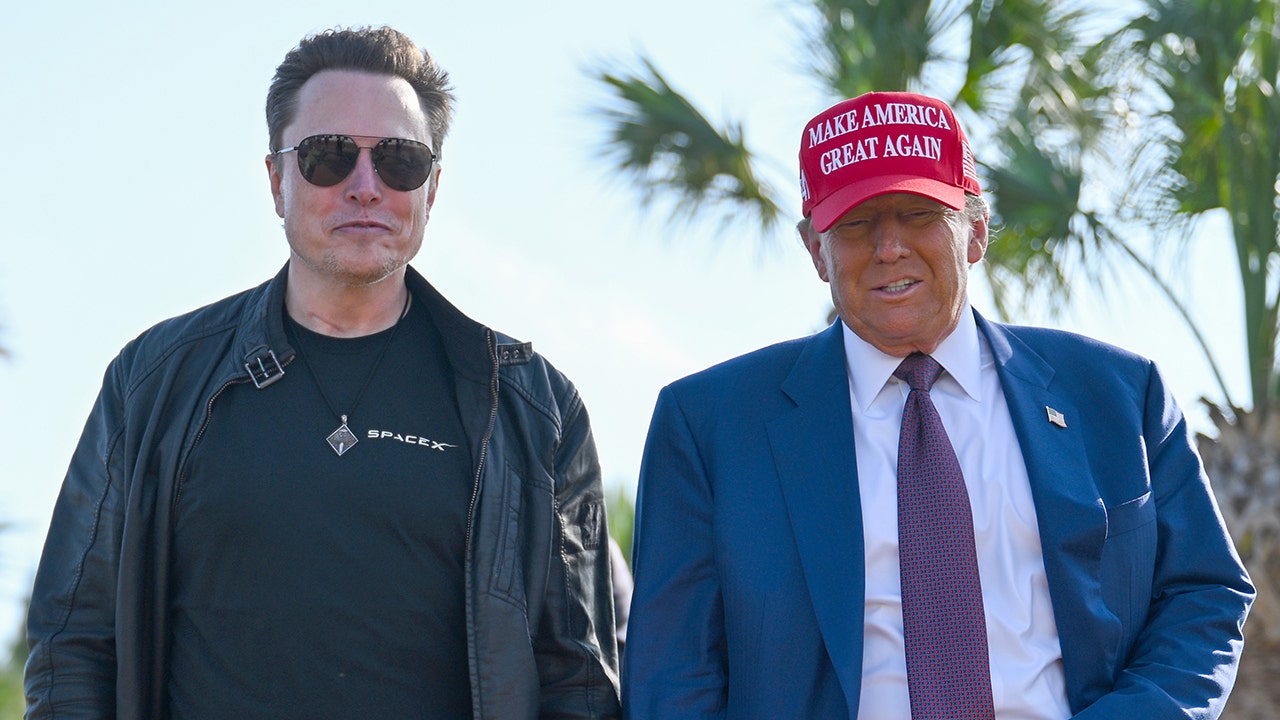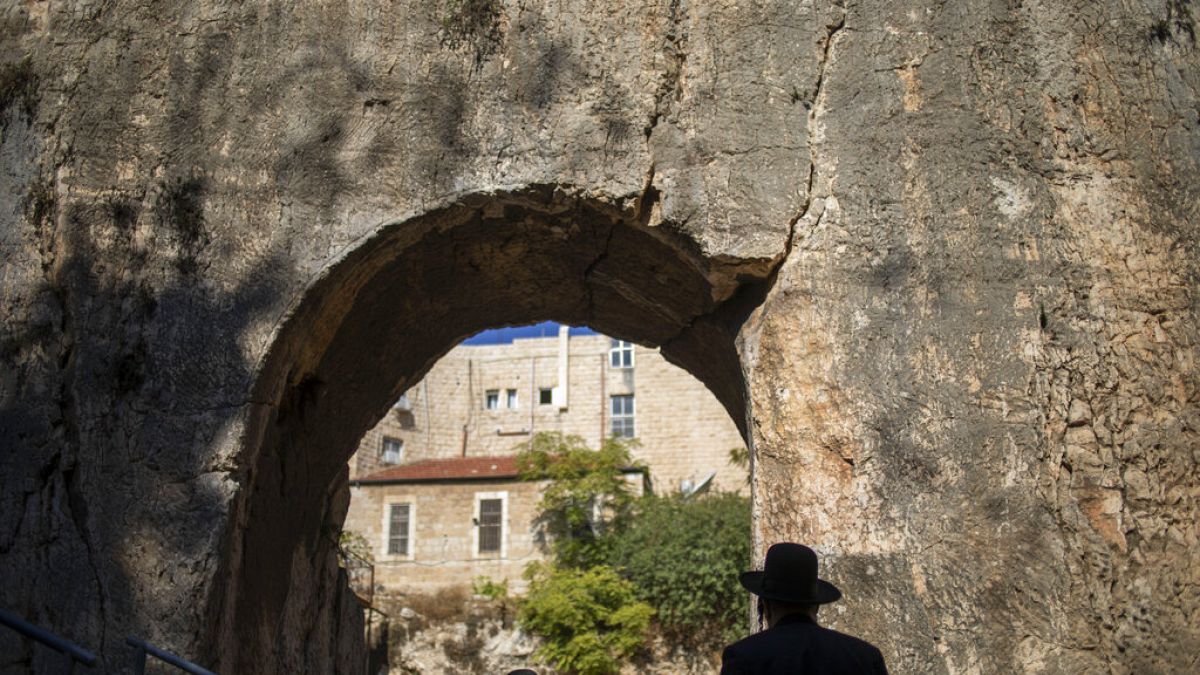New York
Did N.Y. Leaders Leave Residents Unprepared for the Air Quality Crisis?

New Yorkers have grown accustomed to being inundated with well-intentioned warnings from city and state leaders, for everything from incoming snowstorms to virus outbreaks.
But as the skies darkened dramatically over New York City on Tuesday evening, the air suddenly rich with acrid smoke, Mayor Eric Adams and Gov. Kathy Hochul made no public appearances about the worsening conditions, limiting their communications to news releases and posts on Twitter.
It was not until Wednesday morning, roughly 12 hours after the air quality reached historically unhealthy levels, before Mr. Adams and Ms. Hochul addressed reporters to discuss the health crisis.
Mr. Adams drew almost immediate criticism over his response; Ms. Hochul was mostly spared. They were among the leaders of cities across the Eastern Seaboard who were suddenly left to grapple with a situation they had never dealt with before, as air quality worsened to levels not seen since the worst effects of wildfires in California and Oregon.
In New York City, the air quality index hit 413 on Wednesday, the highest level ever recorded, sending more patients than usual to city hospitals with respiratory problems and prompting Broadway shows and a Yankees game to be canceled.
Mr. Adams and Ms. Hochul, Democrats in a state with an outspoken left-wing of the party, are not strangers to crises, from the pandemic to heightened crime and the influx of tens of thousands of migrants from the southern border.
But some health experts and elected officials in New York City suggested that Mr. Adams and Ms. Hochul should have moved more quickly to alert residents to the hazards posed by the smoke, to distribute high quality masks and to urge more people to work from home.
Wildfire smoke at high levels can cause symptoms like stinging eyes or coughing for people without underlying conditions.
But for those who are most vulnerable, especially those with respiratory issues like asthma, even brief exposures can have more serious and immediate ramifications, as toxins in the smoke can trigger inflammation and worsen existing health problems.
Rebecca Bratspies, the director of the Center for Urban Environmental Reform at the City University of New York School of Law, said that masks were distributed too late, after the worst air quality conditions had passed.
She said that she had been watching reports about the wildfires in Canada since last weekend and the city should have been better prepared.
“When the mayor says there’s no game plan for this — of course there is,” said Ms. Bratspies, who serves on the city’s Environmental Justice Advisory Board.
Mr. Adams strenuously defended the city’s response and said that officials were doing their best to respond to a new and unpredictable threat.
“What we should really try to prevent doing is to give any indication that this administration did not proactively respond and did not move in the right direction to let New Yorkers know,” Mr. Adams told reporters on Wednesday morning.
By Thursday, the mayor’s tone became more strident. He asked reporters if he should also be prepared if a “meteor fell to the planet Earth.” (The White House does have a plan for a meteor strike.)
“So if you want to play — ‘Why didn’t you know every problem that this is going to create?’ — that’s up to you,” the mayor said. “I know how well this team responded.”
Mr. Adams, who is known for keeping a relentless schedule of public appearances, sought to show his hands-on approach by visiting a public housing building on Wednesday night to distribute masks.
But the city’s commissioner for emergency management, Zach Iscol, acknowledged on Wednesday that the city did not have an “off-the-shelf plan” for a smoke emergency, even though it has other plans for unlikely events like a nuclear attack.
“That’s something that we are now developing,” he told reporters.
Dr. Jay Varma, director of the Cornell Center for Pandemic Prevention and Response and a health adviser under former Mayor Bill de Blasio, said that the health crisis showed the need for the state and city to create early warning systems to alert residents about the risks of wildfire smoke in advance, like they do with coastal storms, and to consider solutions to improve air quality when it is poor, such as limiting car traffic as other cities do, including Beijing and Mexico City.
The state’s Department of Environmental Conservation first posted an advisory warning about elevated levels of fine particulate matter in certain parts of the state on June 1.
On Tuesday afternoon, the governor’s office issued a news release announcing that the wildfires were creating hazy conditions in New York City and elsewhere, urging residents to limit exposure and saying state experts were monitoring the situation.
On Wednesday morning, as many New Yorkers woke up to a thick blanket of haze, the governor spoke to reporters in Albany about the situation, saying it was “an emergency crisis” and warning it could last several days.
Asked about the wisdom of declaring a state of emergency, Ms. Hochul said that it was unnecessary.
“A state of emergency is a mechanism you use when there’s something you can do about it,” she said. “We don’t have a lot we can do about the circumstances for contaminated toxic air coming into our airspace, so there’s not a need for deploying resources or bringing money to the table.”
On Wednesday evening, Ms. Hochul held an impromptu briefing in Albany to provide further updates and announced that the state would make one million Covid masks available from its stockpile. The masks, she said, would be distributed in subway stations, state parks, at state facilities and directly to local governments.
Dr. Varma said that he was glad that Ms, Hochul was distributing masks, but that some New Yorkers needed them more urgently than others.
“I would like to have seen that the priority was going to areas with higher rates of asthma, which basically overlap with racial and economic disparities,” he said.
On Thursday, as scrutiny of Mr. Adams’s response mounted, Ms. Hochul sought to fend off any criticism of the state’s actions by noting state officials began sending advisories as early as last week.
She said there was no way of knowing that the air quality would deteriorate so precipitously.
“Six days ago, we started giving out our announcements to be prepared,” the governor said during another briefing in Albany. “We were monitoring.”
The explanations from the governor and Mr. Adams did little to allay criticism, especially of the mayor. Lincoln Restler, a City Council member from Brooklyn, complained on Wednesday afternoon that the city had “not taken a single proactive step to protect New Yorkers,” other than suspending outdoor activities at schools.
Brad Lander, the city comptroller and a frequent critic of the mayor, said in an interview that the city should have been prepared with a plan to respond because California had experienced similar events for years.
“We just came through a crisis that was all about masks, ventilation and air quality,” he said in reference to the pandemic. “We were too slow to deploy them at a moment when they’re urgently needed.”
And Melissa DeRosa, who was a top aide to former Gov. Andrew M. Cuomo, blamed both federal and state leaders for not communicating quickly enough with New Yorkers.
“Would be nice if there was a steady stream of information from the federal and state governments telling people what is going on,” she wrote on Twitter.
Dana Rubinstein contributed reporting.

New York
Are You Smarter Than a Billionaire?

Over the course of one week, some of the richest people in the world descended on New York’s auction houses to purchase over $1 billion of art. It might have played out a little differently than you would have expected.
Can you guess which of these works sold for more?
Note: Listed sale prices include auction fees.
Image credits: “Untitled,” via Phillips; “Baby Boom,” via Christie’s Images LTD; “Hazy Sun,” With permission of the Renate, Hans & Maria Hofmann Trust/Artists Rights Society (ARS), New York; via Christie’s Images LTD; “Petit Matin,” via Christie’s Images LTD; “Concetto spaziale, La fine di Dio,” Artists Rights Society (ARS), New York/SIAE, Rome; via Sotheby’s; “Baroque Egg with Bow (Orange/Magenta),” via Sotheby’s; “The Last Supper,” The Andy Warhol Foundation for the Visual Arts, Inc./Licensed by Artists Rights Society (ARS), New York; via Christie’s Images LTD; “Campbell’s Soup I,” The Andy Warhol Foundation for the Visual Arts, Inc./Licensed by Artists Rights Society (ARS), New York; via Christie’s Images LTD; “Miss January,” via Christie’s Images LTD; “Fingermalerei – Akt,” via Sotheby’s; “Grande tête mince (Grande tête de Diego),” Succession Alberto Giacometti/Artists Rights Society (ARS), NY; via Sotheby’s; “Tête au long cou,” Succession Alberto Giacometti/ARS, NY/Photos: ADAGP Images/Paris 2025; via Christie’s Images LTD; “Revelacion,” Remedios Varo, Artists Rights Society (ARS), New York / VEGAP, Madrid; via Christie’s Images LTD; “Le jardin nocturne,” Foundation Paul Delvaux, Sint-Idesbald – ARS/SABAM Belgium; via Christie’s Images LTD.
Produced by Daniel Simmons-Ritchie.
New York
Video: How a Mexican Navy Ship Crashed Into the Brooklyn Bridge

On Saturday, a Mexican Navy ship on a good will tour left a New York City pier bound for Iceland. Four minutes later, it crashed into the Brooklyn Bridge. [Spanish] “It’s falling!” [English] “No way!” Here’s what happened. The Cuauhtémoc had been docked on the Lower East Side of Manhattan for four days, open to visitors looking for a cultural experience. As the ship prepared to leave on Saturday night, a tugboat arrived to escort it out of its pier at 8:20 p.m. The ship’s bow, the front of the vessel, faced Manhattan, meaning it would need to back out of its berth into the East River. As the Cuauhtémoc pulled away from shore, the tugboat appeared to push the side of the ship, helping to pivot the bow south toward its intended route. The river was flowing northeast toward the Brooklyn Bridge and the wind was blowing in roughly the same direction, potentially pushing the ship toward a collision. Photos and videos suggest the tugboat was not tied to the ship, limiting its ability to pull the ship away from the bridge. The Cuauhtémoc began to drift north, back first, up the river. Dr. Salvatore Mercogliano, who’s an adjunct professor at the U.S. Merchant Marine Academy, told The Times that the ship appeared to be giving off a wake. This suggests its propellers may have been running in reverse, pushing it faster toward the bridge. The tugboat sped alongside the ship as it headed north, possibly trying to get in front of it and help the ship maneuver the other way. But it was unable to cut the ship off or reverse its course. All three masts crashed into the underside of the Brooklyn Bridge at approximately 8:24 p.m., four minutes after the ship had left the pier, causing the top sails to collapse. Crew members standing on the masts during the collision were thrown off entirely. Others remained hanging from their harnesses. A New York City patrol boat arrived about eight minutes after the collision, followed quickly by a fire department boat. Additional law enforcement and emergency medical services removed the wounded for treatment. According to the Mexican Navy, two of the 227 people aboard the ship were killed and 22 others were injured.
New York
Audio Data Shows Newark Outage Problems Persisted Longer Than Officials Said

On April 28, controllers at a Philadelphia facility managing air traffic for Newark Liberty International Airport and smaller regional airports in New Jersey suddenly lost radar and radio contact with planes in one of the busiest airspaces in the country.
On Monday, two weeks after the episode, Sean Duffy, the secretary of transportation, said that the radio returned “almost immediately,” while the radar took up to 90 seconds before it was operational.
A Times analysis of flight traffic data and air traffic control feed, however, reveals that controllers were struggling with communication issues for several minutes after transmissions first blacked out.
The episode resulted in multiple air traffic controllers requesting trauma leave, triggering severe flight delays at Newark that have continued for more than two weeks.
Several exchanges between pilots and controllers show how the outage played out.
Outage Begins
Air traffic recordings show that controllers at the Philadelphia facility first lost radio and radar communications for about a minute starting just before 1:27 p.m., after a controller called out to United Flight 1951, inbound from Phoenix.
The pilot of United 1951 replied to the controller’s call, but there was no answer for over a minute.
1:26:41 PM
Controller
OK, United 1951.
1:26:45 PM
Pilot
Go ahead.
1:27:18 PM
Pilot
Do you hear us?
1:27:51 PM
Controller
How do you hear me?
1:27:53 PM
Pilot
I got you loud and clear now.
Two other planes reached out during the same period as United 1951 — a Boeing 777 inbound from Austria and headed to Newark, and a plane whose pilot called out to a controller, “Approach, are you there?” Their calls went unanswered as well.
Radio Resumes, With Unreliable Radar
From 1:27 to 1:28 p.m., radio communications between pilots and controllers resumed. But soon after, a controller was heard telling multiple aircraft about an ongoing radar outage that was preventing controllers from seeing aircraft on their radarscopes.
One of the planes affected by the radar issues was United Flight 674, a commercial passenger jet headed from Charleston to Newark.
1:27:32 PM
Pilot
United 674, approach.
1:27:36 PM
Controller
Radar contact lost, we lost our radar.
1:30:34 PM
Controller
Turn left 30 degrees.
1:31:03 PM
Pilot
All right, we’re on a heading of 356. …
1:31:44 PM
Controller
I see the turn. I think our radar might be a couple seconds behind.
Once the radio started operating again, some controllers switched from directing flights along their planned paths to instead providing contingency flight instructions.
At 1:28 p.m., the pilot of Flight N16NF, a high-end private jet, was called by a controller who said, “radar contact lost.” The pilot was then told to contact a different controller on another radio frequency.
About two and a half minutes later, the new controller, whose radar did appear to be functioning, instructed the pilot to steer towards a location that would be clear of other aircraft in case the radio communications dropped again.
Flight N426CB, a small private jet flying from Florida to New Jersey, was told to call a different radio frequency at Essex County Airport, known as Caldwell Airport, in northern New Jersey for navigational aid. That was in case the controllers in Philadelphia lost radio communications again.
1:27:57 PM
Controller
If for whatever reason, you don’t hear anything from me further, you can expect to enter right downwind and call Caldwell Tower.
1:29:19 PM
Controller
You just continue on towards the field. They’re going to help navigate you in.
This is in case we are losing our frequencies.
1:29:32 PM
Pilot
OK, I’m going over to Caldwell. Talk to you. Have a good afternoon.
Minutes Later, Radar Issues Persist
According to the Federal Aviation Administration, aircraft reappeared on radarscopes within 90 seconds of the outage’s start, but analysis of air traffic control recordings suggest that the radar remained unreliable for at least some radio frequencies for several minutes after the outage began around 1:27 p.m.
At 1:32 p.m., six minutes after the radio went quiet, Flight N824TP, a small private plane, contacted the controller to request clearance to enter “Class B” airspace — the type around the busiest airports in the country. The request was denied, and the pilot was asked to contact a different radio frequency.
1:32:43 PM
Pilot
Do I have Bravo clearance?
1:32:48 PM
Controller
You do not have a Bravo clearance. We lost our radar, and it’s not working correctly. …
If you want a Bravo clearance, you can just call the tower when you get closer.
1:32:59 PM
Pilot
I’ll wait for that frequency from you, OK?
1:33:03 PM
Controller
Look up the tower frequencies, and we don’t have a radar, so I don’t know where you are.
The last flight to land at Newark was at 1:44 p.m., but about half an hour after the outage began, a controller was still reporting communication problems.
“You’ll have to do that on your own navigation. Our radar and radios are unreliable at the moment,” a Philadelphia controller said to a small aircraft flying from Long Island around 1:54 p.m.
Since April 28, there has been an additional radar outage on May 9, which the F.A.A. also characterized as lasting about 90 seconds. Secretary Duffy has proposed a plan to modernize equipment in the coming months, but the shortage of trained staff members is likely to persist into next year.
-

 News1 week ago
News1 week agoMaps: 3.8-Magnitude Earthquake Strikes Southern California
-

 World1 week ago
World1 week agoPortuguese PM’s party set to win general election, fall short of majority
-
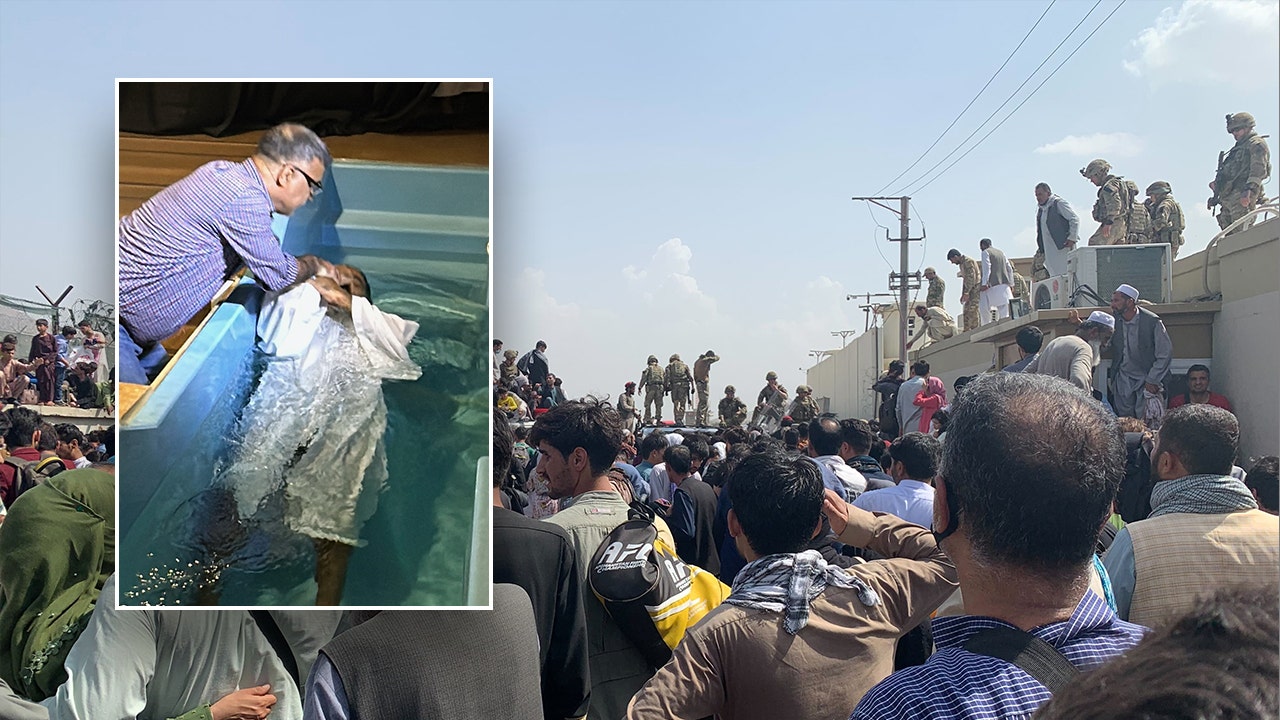
 Politics1 week ago
Politics1 week agoAfghan Christian pastor pleads with Trump, warns of Taliban revenge after admin revokes refugee protections
-
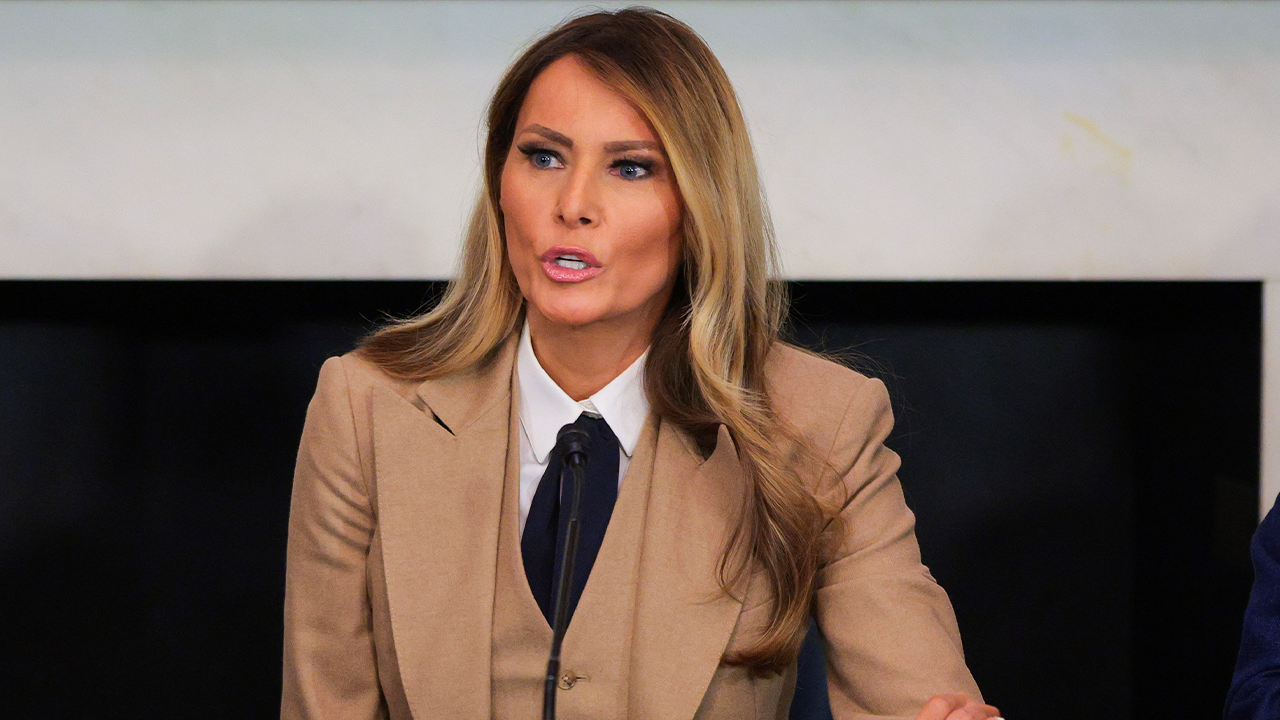
 Politics1 week ago
Politics1 week agoTrump, alongside first lady, to sign bill criminalizing revenge porn and AI deepfakes
-

 Movie Reviews1 week ago
Movie Reviews1 week agoReview | Magellan, conqueror of Philippines, as we’ve never seen him before
-

 Education1 week ago
Education1 week agoHow Usher Writes a Commencement Speech
-
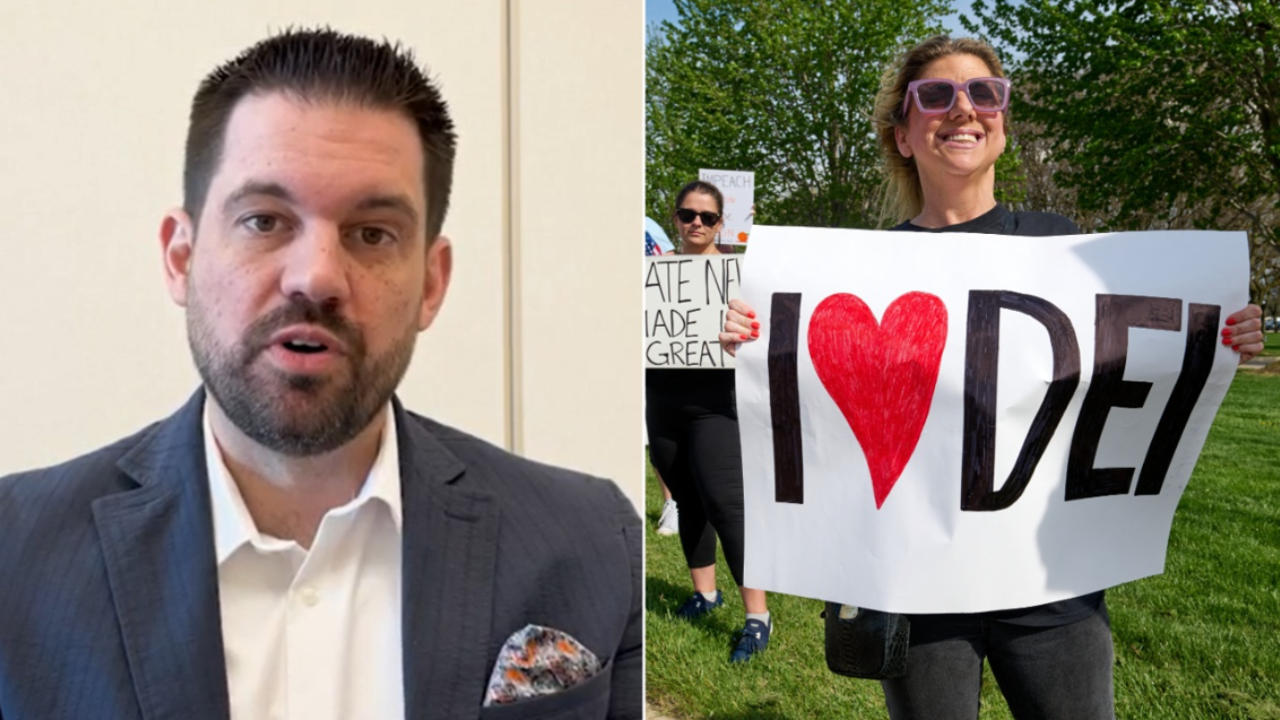
 Politics1 week ago
Politics1 week agoExpert reveals how companies are rebranding 'toxic' DEI policies to skirt Trump-era bans: 'New wrapper'
-

 Finance1 week ago
Finance1 week agoHow to block the financial scammers on social media










